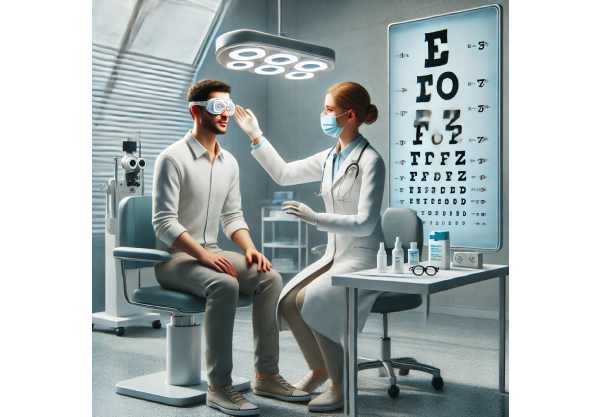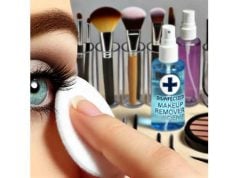
Our eyes, delicate and essential organs, are our windows to the world, allowing us to experience and navigate our surroundings. Yet, they are also highly vulnerable to infections, which can lead to discomfort, pain, and even long-term vision problems if not addressed promptly. Whether you’ve experienced the itchiness of conjunctivitis or the more severe pain of a corneal ulcer, eye infections can significantly impact your daily life. Protecting your eyes from infections is not just about avoiding discomfort—it’s about preserving your vision and overall quality of life. In the following guide, you’ll discover effective strategies to prevent eye infections, ensuring that your eyes remain healthy and resilient.
Understanding Common Eye Infections and Their Causes
Eye infections are more than just an inconvenience; they can lead to serious health complications if not managed properly. To effectively prevent these infections, it’s important to understand the various types of eye infections, what causes them, and how to recognize early signs.
Common Types of Eye Infections
- Conjunctivitis (Pink Eye):
Conjunctivitis, commonly known as pink eye, is a highly contagious infection that causes redness, itching, and discharge from the eyes. There are three primary types:
- Viral Conjunctivitis: This is often caused by the same viruses that lead to the common cold. It spreads easily, especially in environments where people are in close contact.
- Bacterial Conjunctivitis: Bacterial infections can lead to a thick, yellow or green discharge, often causing the eyes to stick together after sleep. This type typically requires antibiotic treatment.
- Allergic Conjunctivitis: Triggered by allergens like pollen or dust mites, this type is not contagious but can be very uncomfortable, often affecting both eyes simultaneously.
- Keratitis:
Keratitis refers to the inflammation of the cornea and can be caused by infections, injuries, or improper use of contact lenses. Symptoms include redness, pain, blurred vision, and sensitivity to light. If left untreated, keratitis can cause severe complications, including vision loss. - Stye (Hordeolum):
A stye is a painful, red lump near the edge of the eyelid, caused by an infection in the oil glands of the eyelid. While most styes resolve on their own, they can cause significant discomfort and, in some cases, may require medical treatment if they persist. - Blepharitis:
Blepharitis is an inflammation of the eyelids that can cause redness, irritation, and flaking at the base of the eyelashes. It is often associated with bacterial infections or skin conditions like rosacea. While not usually dangerous, blepharitis can be a chronic condition that requires diligent eye hygiene to manage. - Uveitis:
Uveitis is the inflammation of the uvea, the middle layer of the eye, which can be triggered by infections, autoimmune diseases, or trauma. Symptoms include pain, redness, blurred vision, and light sensitivity. If not treated, uveitis can lead to serious complications such as glaucoma or cataracts.
Causes and Risk Factors for Eye Infections
Understanding the causes and risk factors for eye infections is crucial for prevention. Eye infections can be caused by bacteria, viruses, fungi, or parasites, and certain behaviors or conditions can increase your risk.
- Poor Hygiene:
One of the most common ways to contract an eye infection is by touching your eyes with unwashed hands. Bacteria and viruses on your hands can easily transfer to your eyes, leading to infections like conjunctivitis or styes. - Contact Lens Use:
While contact lenses are convenient for vision correction, improper use can lead to serious eye infections. Risks include wearing lenses too long, not cleaning them properly, or using expired cleaning solutions. Such practices can introduce harmful bacteria or fungi to the eyes, increasing the risk of infections like keratitis. - Exposure to Contaminated Water:
Swimming in pools, lakes, or hot tubs that are not properly maintained can expose your eyes to harmful microorganisms. These pathogens can cause infections, particularly if you wear contact lenses while swimming, as the lenses can trap bacteria against the eye. - Weakened Immune System:
Individuals with weakened immune systems, whether due to chronic conditions like diabetes or the use of immunosuppressive medications, are more susceptible to eye infections. The body’s diminished ability to fight off infections can make the eyes more vulnerable. - Environmental Factors:
Environmental factors such as pollution, dust, and allergens can irritate the eyes and increase the risk of infections. Those who work in environments with airborne particles or chemicals should take extra precautions to protect their eyes. - Previous Eye Injuries or Surgeries:
Any injury to the eye or recent eye surgery can leave the eye more susceptible to infections. The protective barriers of the eye might be compromised, allowing pathogens easier access.
Recognizing the Symptoms of Eye Infections
Recognizing the early signs of an eye infection is vital for preventing serious complications. Symptoms vary depending on the type of infection but often include:
- Redness and Swelling: Persistent redness or swelling of the eye or eyelid is a common sign of infection. Swelling can be particularly prominent with conditions like styes or severe conjunctivitis.
- Pain or Discomfort: Eye infections frequently cause a sharp or dull pain, a gritty sensation, or overall discomfort. The severity can range from mild irritation to intense pain.
- Discharge: A hallmark of many eye infections, discharge can vary in color and consistency. Bacterial infections often produce thicker, yellow or green discharge, while viral infections may cause a more watery discharge.
- Blurred Vision: Infections like keratitis or uveitis can cause blurred vision due to inflammation or discharge covering the eye’s surface. This is a serious symptom that requires immediate medical attention.
- Light Sensitivity: Sensitivity to light, known as photophobia, is often associated with more severe infections like uveitis or keratitis and can indicate inflammation inside the eye.
Strategies to Prevent Eye Infections
Prevention is the best defense against eye infections. By adopting good hygiene practices, being mindful of your environment, and taking care of your eyes, you can significantly reduce your risk of developing an infection.
Maintaining Good Eye Hygiene
- Regular Hand Washing:
Washing your hands frequently and thoroughly is one of the simplest yet most effective ways to prevent eye infections. Make it a habit to wash your hands before touching your eyes, inserting or removing contact lenses, or applying makeup. - Proper Contact Lens Care:
If you wear contact lenses, following proper care protocols is crucial. Always wash your hands before handling your lenses. Use fresh, appropriate cleaning solutions—never water or saliva—to clean your lenses. Avoid wearing lenses for longer than recommended, and do not sleep in them unless specifically advised by your eye doctor. - Avoid Touching Your Eyes:
Try to avoid touching or rubbing your eyes, especially with unwashed hands. If you need to touch your eyes, for example, to remove an eyelash or adjust your glasses, ensure your hands are clean. - Regular Cleaning of Eyewear:
If you wear glasses, clean them regularly to remove any bacteria or dirt that might come into contact with your eyes. Use a proper lens cleaner and microfiber cloth to avoid scratching the lenses or spreading bacteria. - Proper Makeup Hygiene:
Eye makeup can harbor bacteria, especially if it’s old or improperly stored. Replace eye makeup like mascara and eyeliner every three months, and avoid sharing makeup with others. Always remove your makeup before bed to prevent clogging the oil glands and causing infections like blepharitis or styes.
Protecting Your Eyes in Different Environments
- Wear Protective Eyewear:
If you’re working in environments with dust, chemicals, or other irritants, always wear protective eyewear. This not only prevents direct injury but also reduces the risk of infection by shielding your eyes from harmful particles. - Avoid Swimming with Contact Lenses:
If you swim, consider removing your contact lenses beforehand. If this is not an option, use waterproof goggles to protect your eyes. Contact lenses can trap bacteria from the water against your eye, increasing the risk of infection. - Use Proper Lighting and Screens:
Ensure that your environment is well-lit when reading or working on screens. Poor lighting can cause eye strain, leading you to rub your eyes more frequently and increasing the risk of infection. - Minimize Exposure to Allergens:
If you suffer from allergic conjunctivitis, try to minimize your exposure to allergens such as pollen or dust. Use air purifiers at home, keep windows closed during high pollen seasons, and clean your living spaces regularly to reduce allergen buildup.
Strengthening Your Immune System
- Healthy Diet:
A balanced diet rich in vitamins and minerals can strengthen your immune system, making you less susceptible to infections. Focus on foods high in vitamins A, C, and E, zinc, and omega-3 fatty acids—all of which are crucial for eye health. - Regular Exercise:
Regular physical activity improves circulation, enhances immune function, and helps your body fend off infections, including those affecting the eyes. Aim for at least 30 minutes of moderate exercise most days of the week. - Adequate Sleep:
Sleep is essential for overall health, including eye health. Ensure you get enough rest each night, as fatigue can weaken your immune system and make your eyes more prone to infection. - Stay Hydrated:
Proper hydration supports tear production, which helps to keep your eyes moist and flush out debris and bacteria. Aim to drink plenty of water throughout the day to ensure that your body, including your eyes, stays well-hydrated. Proper hydration is crucial for maintaining the health of your tear film, which is your eyes’ first line of defense against infections.
Regular Eye Exams
- Routine Eye Checkups:
Regular visits to your eye doctor are essential for maintaining eye health and catching any potential issues early. During these exams, your doctor can check for signs of infections, assess your overall eye health, and provide guidance on how to prevent future problems. - Prompt Attention to Symptoms:
If you notice any symptoms of an eye infection—such as redness, pain, discharge, or blurred vision—don’t wait to see if they go away on their own. Early intervention is key to preventing more serious complications. Contact your eye doctor immediately if you suspect an infection.
Educating Yourself and Others
- Learn About Eye Health:
Stay informed about eye health and the various factors that can affect your eyes. The more you know, the better equipped you will be to prevent infections and maintain healthy eyes. - Teach Proper Hygiene:
If you have children or work in an environment where people are in close contact, such as a school or daycare, teach and reinforce proper hygiene practices. Educating others on the importance of handwashing, not sharing personal items like towels or makeup, and proper eye care can help reduce the spread of infections. - Be Mindful of Your Environment:
Pay attention to the environments where you spend a lot of time, whether at work, home, or school. Ensuring these spaces are clean and free of potential hazards can go a long way in preventing eye infections.










